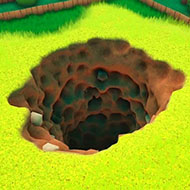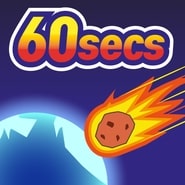

A Game About Digging A Hole is a masterclass in minimalist game design, reducing interaction to its purest form: the act of excavation. With no tutorials, objectives, or time constraints, it strips away all distractions, leaving only the rhythmic motion of digging downward.
The game’s brilliance lies in its ability to transform a mundane action into a hypnotic, almost philosophical experience. As players descend further into the earth, they encounter subtle shifts in atmosphere, sound, and texture—each layer hinting at something deeper, both literally and metaphorically.
This is not a game about winning, but about persistence, curiosity, and the quiet satisfaction of gradual progress.
The Psychology of Repetition and Discovery
At first glance, A Game About Digging A Hole appears almost too simple—just a character and an endless expanse of dirt. Yet, as players settle into the rhythm of digging, they begin to notice the game’s carefully crafted feedback loops:
- Pacing and momentum: The digging speed increases slightly with sustained effort, creating a subconscious push to go deeper.
- Auditory immersion: The sound of shifting dirt evolves as layers change, from soft crumbles to dense, echoing thuds.
- Visual progression: The color palette and texture of the earth shift imperceptibly at first, then dramatically, marking unseen milestones.
This gradual transformation keeps players engaged, not through traditional rewards, but through the innate human desire to uncover what lies beyond the next layer. The absence of explicit goals paradoxically makes the experience more compelling—every dig feels like a step toward an unknown revelation.
Hidden Depths and Player Interpretation
The deeper players go, the more the game begins to play with expectations. What starts as a straightforward digging simulator slowly morphs into something more ambiguous, even surreal:
- Environmental storytelling: Strange silhouettes, buried objects, or fleeting shadows appear, never explained but deeply suggestive.
- Atmospheric shifts: The background music—initially subtle—transforms into something more haunting or ethereal at certain depths.
- Illusory endings: Just when players think they’ve reached the bottom, the game resets or shifts perspective, challenging their perception of progress.
These elements invite interpretation. Some players see the hole as a metaphor for labor, time, or existential pursuit. Others treat it as a meditative exercise, where the act of digging becomes a form of digital mindfulness. The game’s refusal to provide answers is its greatest strength, allowing each player to project their own meaning onto the experience.
Why This Game Resonates
A Game About Digging A Hole thrives in an era of overstimulation by doing the opposite: it asks players to focus on a single, repetitive action and find meaning in it. Its appeal lies in several key factors:
- Accessibility: Anyone can play—no tutorials, no complex controls, just digging.
- Unpredictability: The deeper you go, the more the game subverts expectations.
- Emotional resonance: The journey feels personal, as if the hole reflects the player’s own persistence.
Ultimately, the game’s power comes from its simplicity. It doesn’t tell players what to think or feel—it merely provides a space for them to dig, both literally and introspectively. Whether played for five minutes or five hours, A Game About Digging A Hole leaves a lasting impression, proving that sometimes, the most profound experiences come from the simplest interactions.




















